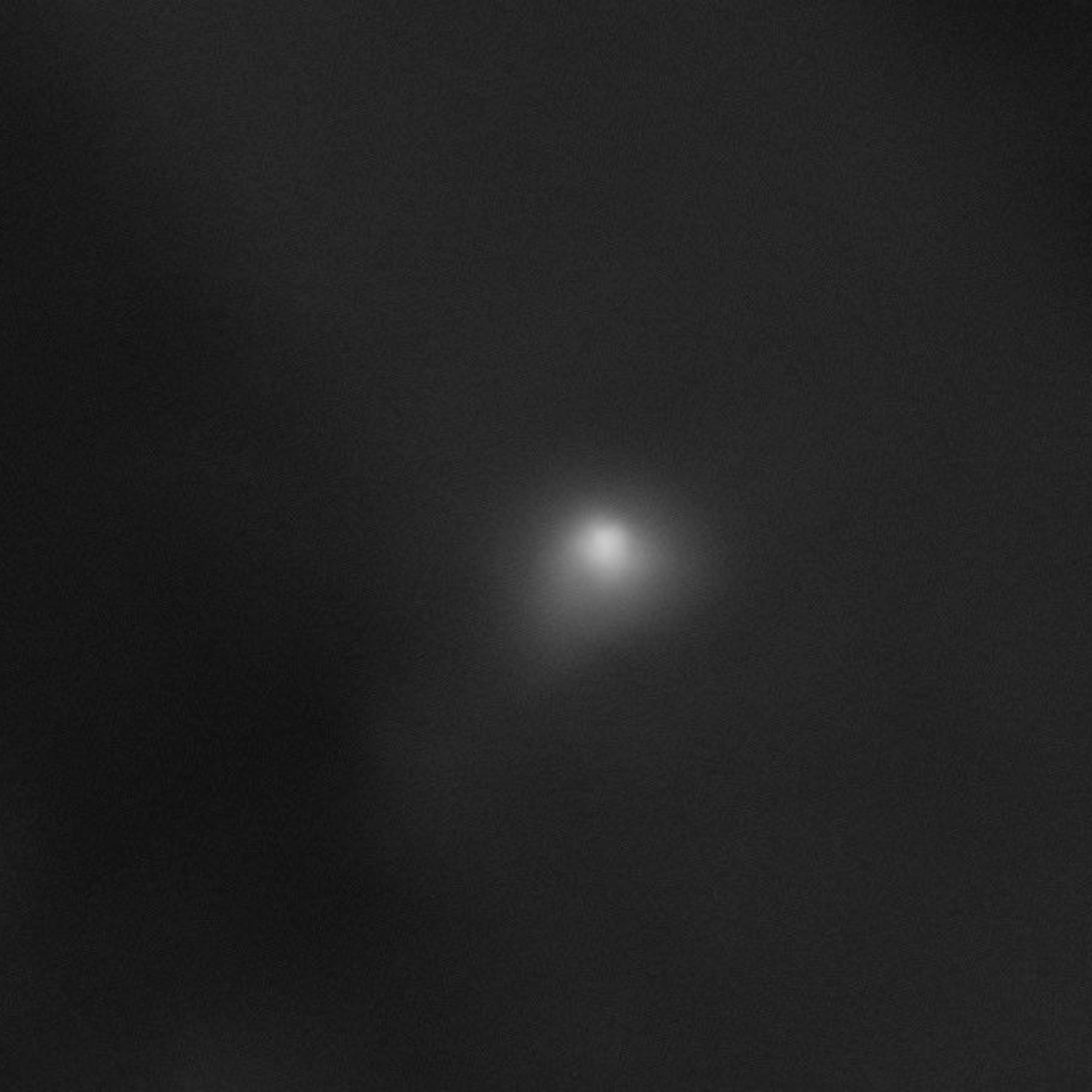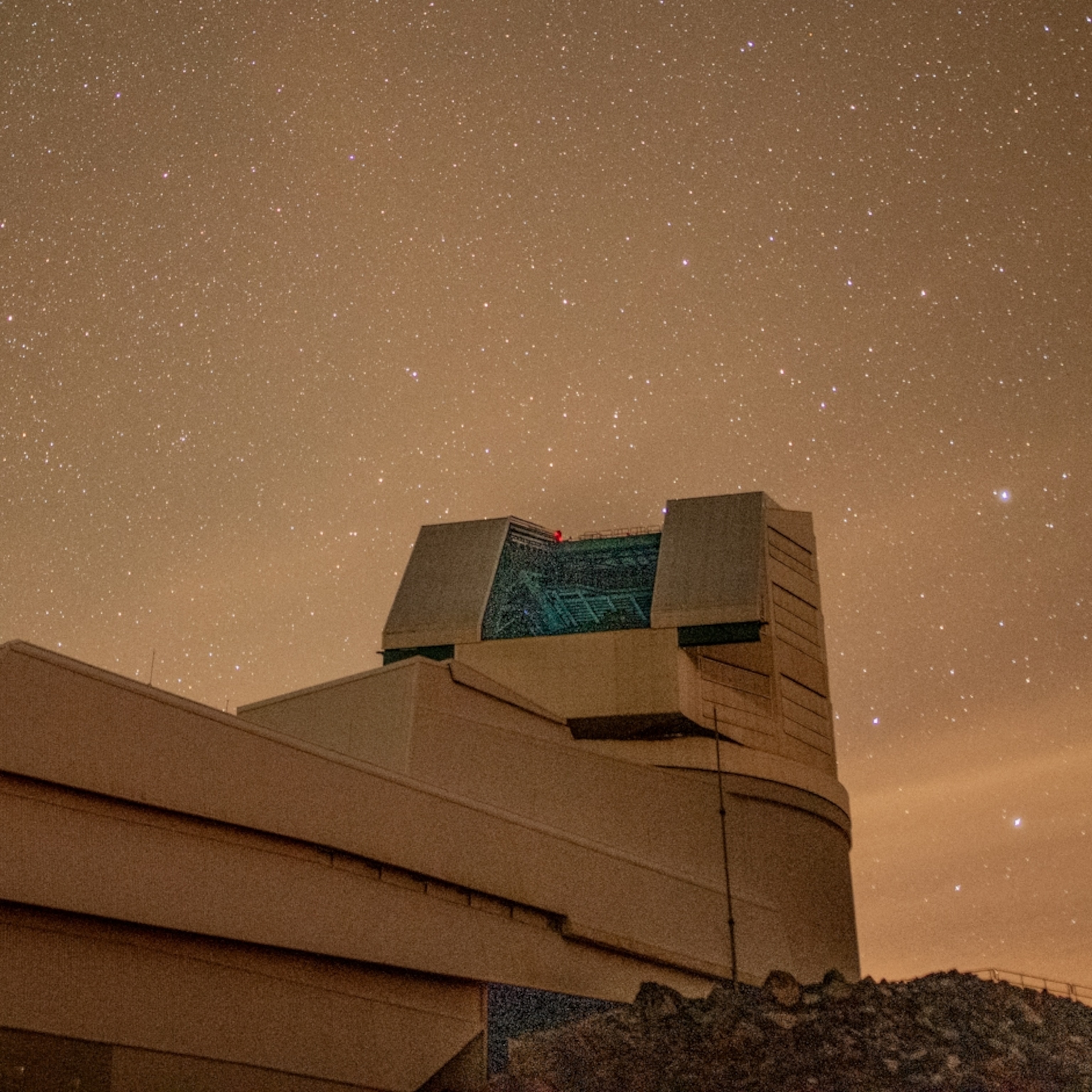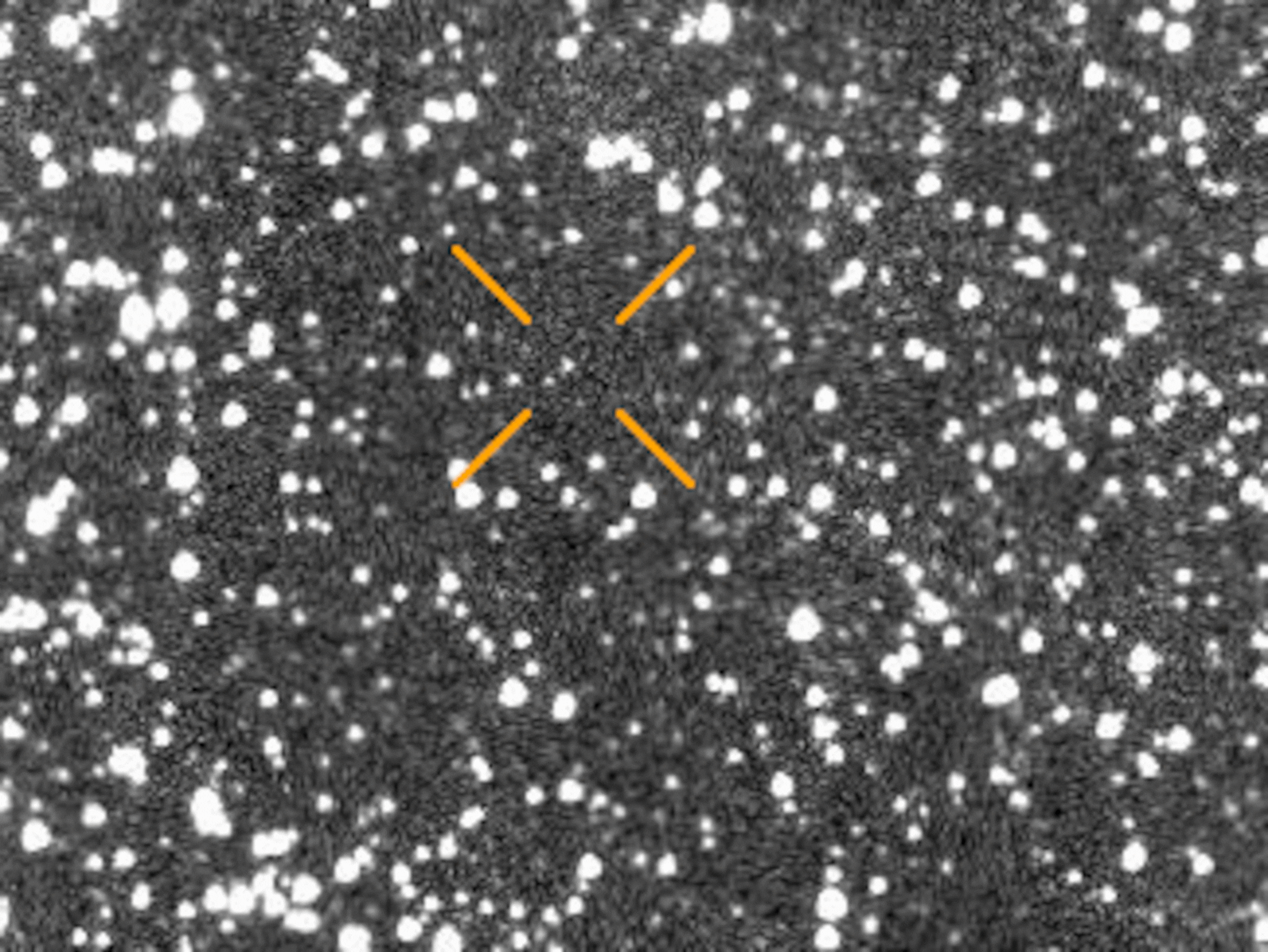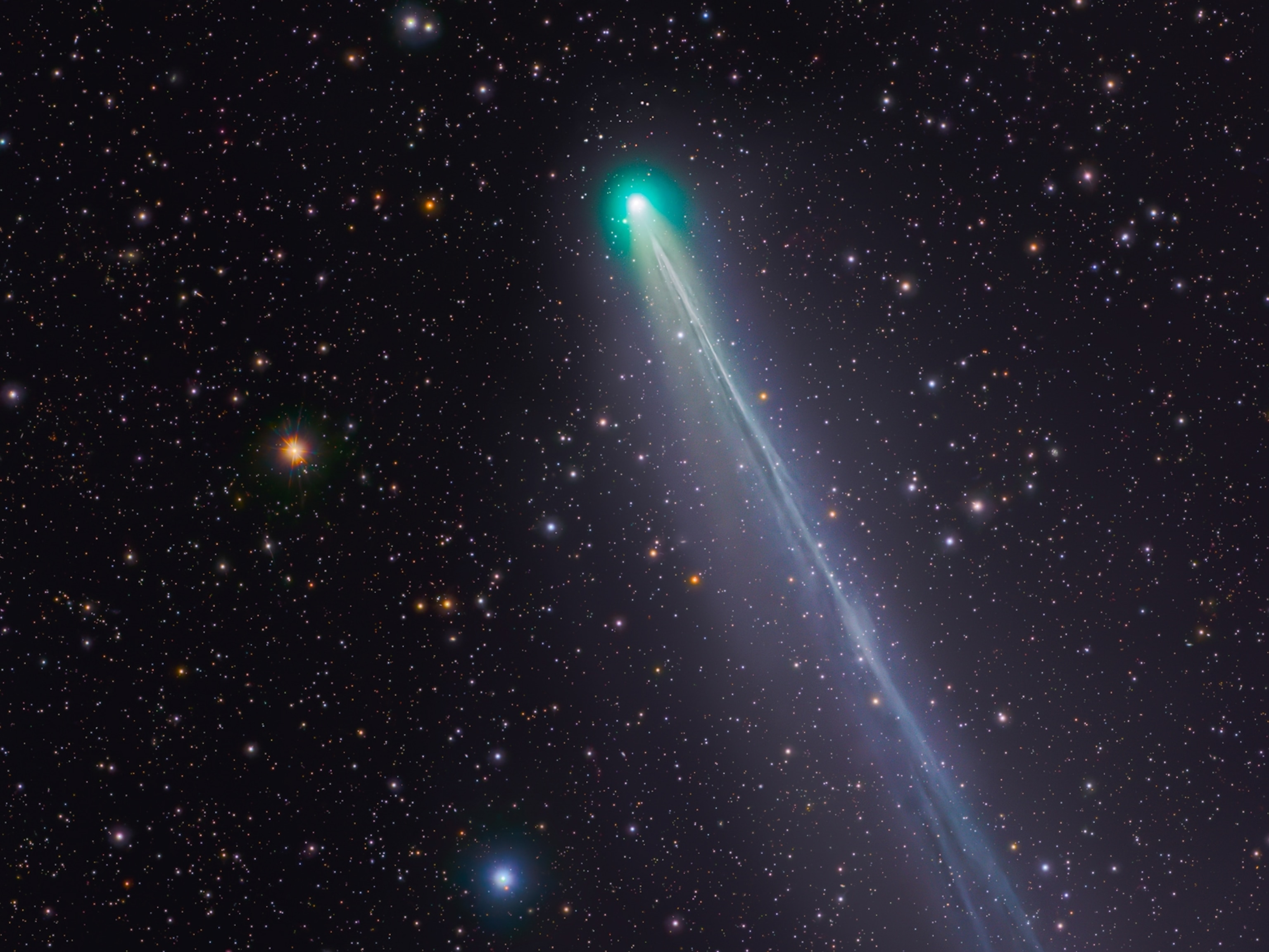More than 2.7 billion miles from the sun—29 times farther than Earth treads—a tiny sliver of sunlight reflected off something plummeting toward our home star. Something icy. Something unimaginably old. Something big.
About four hours later, in the predawn hours of October 20, 2014, a telescope in Chile’s Atacama Desert turned its gaze toward the heavens and snapped an enormous picture of the southern night sky, capturing hints of this reflected light.
However, it would take nearly seven years for researchers to identify that strange dot of light as a huge primordial comet—possibly the biggest ever studied with modern telescopes. Called Bernardinelli-Bernstein, the comet was announced in June, and researchers have now compiled everything they know about it in a discovery paper submitted to The Astrophysical Journal Letters.
“My phone didn’t stop ringing—I wasn’t expecting the reception the [scientific] community gave to the discovery,” says Pedro Bernardinelli, a postdoctoral researcher at the University of Washington. He co-discovered the comet during the final weeks of his Ph.D. research at the University of Pennsylvania with his then-adviser Gary Bernstein. “Overall, it’s been pretty overwhelming.”
The latest estimates put the comet’s nucleus at about 93 miles (150 kilometers) wide. That’s by far the biggest size estimate for a comet in decades. By contrast, comet 67P/Churyumov–Gerasimenko, which the European Space Agency’s Rosetta spacecraft orbited from 2014 to 2016, was only about 2.5 miles wide.
“We’re going from your city-size comets to your island-size comets,” says Michele Bannister, an astronomer at New Zealand’s University of Canterbury who was not involved in the discovery paper. Comet Bernardinelli-Bernstein’s size may even rank alongside some historical “great comets,” including a very bright—and presumably huge—comet that journeyed into the inner solar system in 1729.
Over the next decade, Bernardinelli-Bernstein will continue to get brighter as it approaches the inner solar system, dive-bombing the plane of the planets’ orbits from below. It will make its closest approach on January 21, 2031, when the comet is expected to come within about a billion miles of the sun, slightly farther away than Saturn’s average distance. It will then begin its long retreat back into the solar system’s outer realms, remaining visible into at least the 2040s, if not decades longer.
Depending on how much gas the comet releases as its ices vaporize in the sun’s glare, Bernardinelli-Bernstein could get as bright in the night sky as Saturn’s largest moon Titan. If so, the comet should be visible in 2031 with a decent backyard telescope.
But Bernardinelli-Bernstein is also notable for how far it was from the sun when it was first spotted. The icy object hails from the Oort cloud, an enormous spherical haze of objects that surrounds the sun thousands of times farther out than Earth.
Astronomers calculate that this comet takes millions of years to circle the sun. Only three such “long-period” comets have ever been discovered on their way in from the Oort cloud, and Bernardinelli-Bernstein was found when it was still more than 2.7 billion miles away, a record for a comet. Because it was discovered so early, a generation of astronomers will have the opportunity to unravel its mysteries.
A dot of light in the dark
Bernardinell-Bernstein came to humankind’s attention thanks to an exquisitely sensitive digital camera installed at the 13-foot-wide Blanco Telescope, part of the Cerro Tololo Inter-American Observatory in Chile’s Atacama Desert.
This camera wasn’t specifically looking for far-flung solar system objects; rather, it was the key source of data for the Dark Energy Survey, an effort that collected 80,000 exposures of wide swaths of the southern night sky from 2013 to 2019. This dataset has transformed scientists’ quest to understand dark energy, a mysterious force that drives the universe’s accelerating expansion. But images taken to study dark energy and other cosmic phenomena can also be used to discover objects much closer to home.
For his Ph.D. research, Bernardinelli’s goal was to use the Dark Energy Survey images to find previously undiscovered objects that orbit the sun beyond Neptune. He faced a tall order. Each image was so massive, displaying just one at full resolution would require a grid of 275 HD televisions. Bernardinelli scoured tens of thousands of these images for dots of light a few pixels wide.
To pull off this hunt, Bernardinelli wrote computer code that searched the Dark Energy Survey’s images for dots that moved against the backdrop of distant stars. Six months of grueling calculations, run on a cluster of some 200 computers at Illinois’s Fermi National Accelerator Laboratory, whittled down this massive dataset to a final list of 817 newfound objects whose orbits didn’t match any known body in the solar system. As a final step, Bernardinelli and Bernstein checked this list by hand to make sure the code did its job correctly.
That’s when they noticed it: an object as bright as some of the 100-mile-wide worlds beyond Neptune, but with an extreme orbit that means it must have originated trillions of miles from the sun, just like a long-period comet.
Finding the comet was “a very big needle-in-the-haystack problem,” Bernstein says. “But we managed to figure that out, and we got this little cherry on top of the sundae!”
Turning telescopes toward Bernardinelli-Bernstein
Bernardinelli and Bernstein submitted their evidence for the comet to the Minor Planet Center in Cambridge, Massachusetts, which acts as the world’s official repository for the orbits of comets, asteroids, and the solar system’s other small bodies. On June 19, the center confirmed that the object was a new discovery. Five days later, the object was confirmed to be a comet and named Bernardinell-Bernstein in the pair’s honor.
News of the comet’s discovery spread quickly. In a matter of days, astronomers all over the world began turning their telescopes toward the incoming object and scouring their archives for any other images of it that had gone unnoticed. Researchers soon found the comet hiding in archival data as far back as 2010, improving the accuracy of its known orbit.
And within 24 hours of the announcement, multiple teams of astronomers had confirmed that the comet was releasing enough dust and gas to make a visible coma, or tail, even though it was still more than two billion miles from the sun.
Comets don’t give off much material until they get closer to the heat of the sun, which causes frozen compounds to sublimate directly into gas. Bernardinell-Bernstein, however, appears to be rich in gas-producing “volatiles” that start to sublimate even in the frigid space beyond Neptune. The observations suggest that the object couldn’t have spent much time baking in the inner solar system in its past—making it enticingly pristine.
More clues about its tail came from images taken in 2018 and 2020 by TESS, an exoplanet-hunting space telescope operated by NASA that also captured images of the incoming comet. Oddly, the comet was much brighter in the TESS data than it was in the Dark Energy Survey images. The team realized that TESS’s pixels covered much bigger areas of the sky than the Dark Energy Survey’s pixels, which meant the comet must have been releasing a huge, extremely diffuse tail.
Bernardinelli and Bernstein went back through the Dark Energy Survey data, stacking many images of their namesake comet to try and identify the comet’s tail. Eventually, they found an extremely faint signal hiding in their data—and learned that the comet had started giving off gas as far as 2.4 billion miles from the sun, nearly 40 percent farther out than Uranus is on average.
By tracking how the coma has changed over time, and how much brighter the comet was getting as it came closer to the sun, Bernardinelli’s team could start to model the comet’s chemistry. Given how feeble sunlight is at this extreme distance, the comet must either be giving off carbon dioxide or nitrogen gas, they found.
“How cool is that? We can observe this thing from halfway across the solar system … and we can make such remarkably strong inferences about its composition,” says study co-author Ben Montet, a planetary scientist at the University of New South Wales in Sydney, Australia, who specializes in TESS data. “It’s amazing what you can do with relatively few photons.”
A bright future
Scientists are already brainstorming what it would take to visit Bernardinelli-Bernstein with a spacecraft. For now, there’s no official mission in the works, but if the world’s space agencies move quickly, a mission could intercept the comet in 2033 if it launches no later than 2029.
Researchers are also hard at work deciphering the comet’s past voyages through the solar system to determine how much it has been changed by the sun. Bernardinelli and Bernstein’s team calculate that in 2031, the comet will be the closest it’s come to the sun in at least three million years.
Peering any deeper into the past, however, is extremely difficult. Oort cloud comets are so far away, their orbits can be nudged by passing stars, which means that modeling their orbits requires charting the motion of stars through the Milky Way. New data suggest that one particularly troublesome star could muck up any efforts to trace back the comet’s orbit.
For several years, researchers have known that about 2.8 million years ago, a sun-like star called HD 7977 passed by the solar system. But no one knows exactly where it flew by. In new research submitted to the journal Astronomy & Astrophysics, researchers Piotr Dybczyński and Sławomir Breiter from Poland’s Adam Mickiewicz University found that we don’t even know which side of the solar system HD 7977 passed by.
That uncertainty means that the star’s gravitational tug on Oort cloud comets is poorly understood, with potentially major implications for when Bernardinelli-Bernstein last ventured inward and how close it came to the sun.
Observations as the comet gets closer might also change its expected size. The 93-mile estimate is based on its current brightness, as well as models of the dust and gas the comet gives off. But calculating comet size using this method is a tricky business. If models of a comet’s outgassing are incomplete, the nucleus can look bigger than it really is.
“They did an incredible job, but I think it’s going to turn out, probably, that this object is quite a bit smaller than they’re saying,” says Luke Dones, a comet dynamicist at the Southwest Research Institute in Boulder, Colorado.
The good news is that Bernardinelli-Bernstein gives the world’s astronomers a rare luxury: time. The Vera C. Rubin Observatory in Chile, set to come online in 2023, will be able to track the object for at least the next decade, if not longer. Along the way, the state-of-the-art telescope will transform our view of the solar system—and likely uncover many more comets like Bernardinelli-Bernstein.
In the meantime, as the newfound comet makes its way toward us, scientists and people all over the world will be able to turn their telescopes to the night sky and see an extraordinary visitor: a massive iceball dragging a huge, hazy tail behind it. “It should look spectacular,” Montet says.








